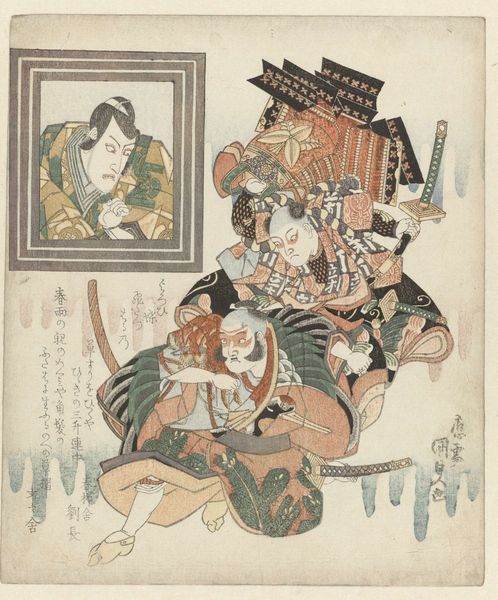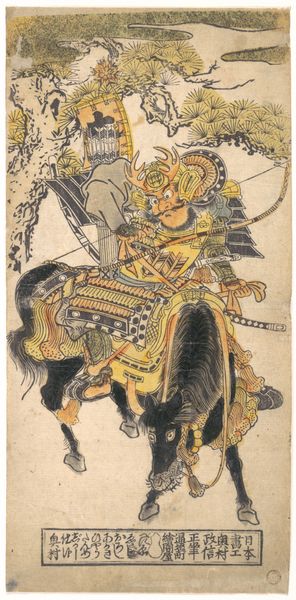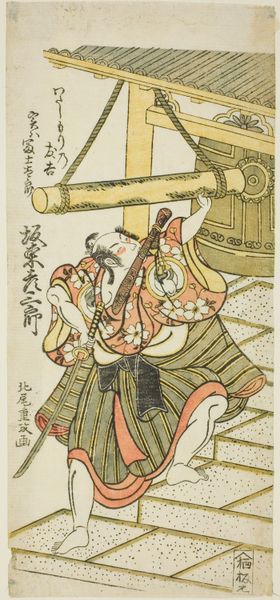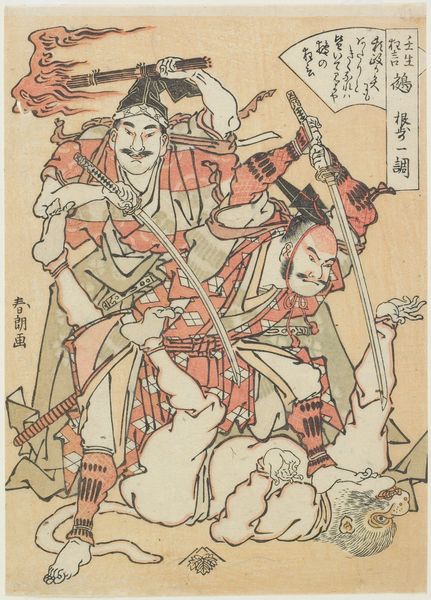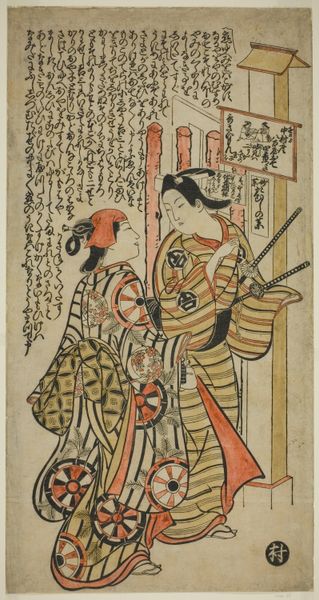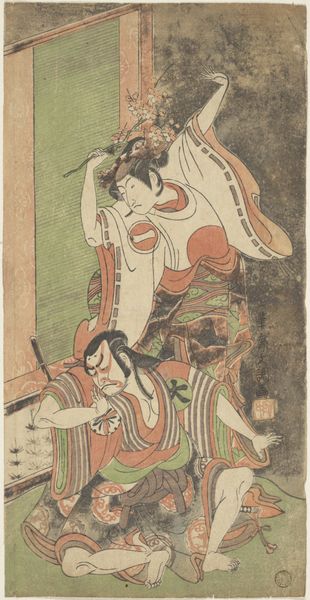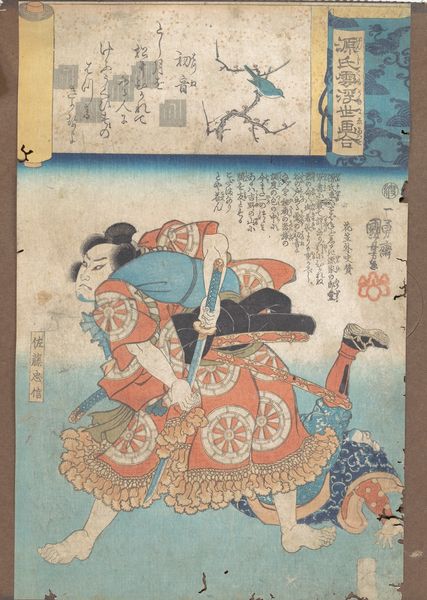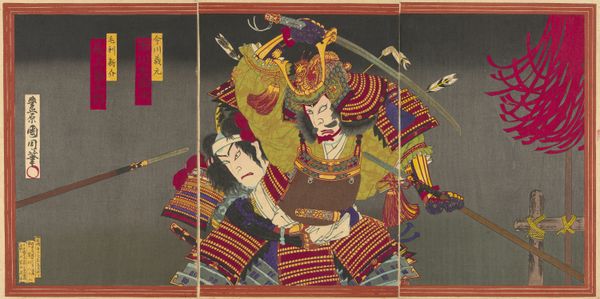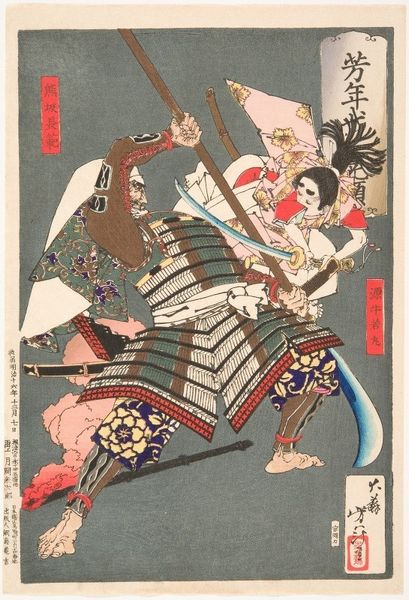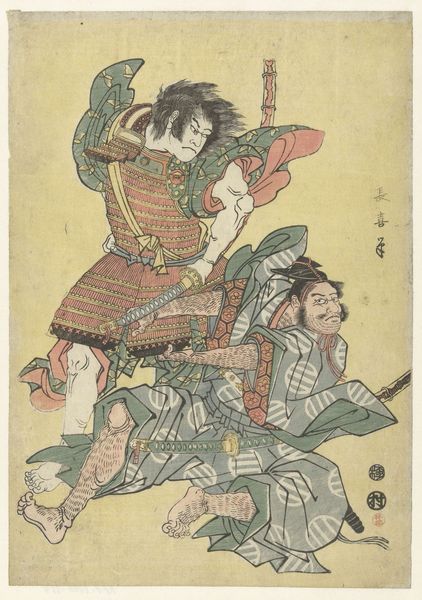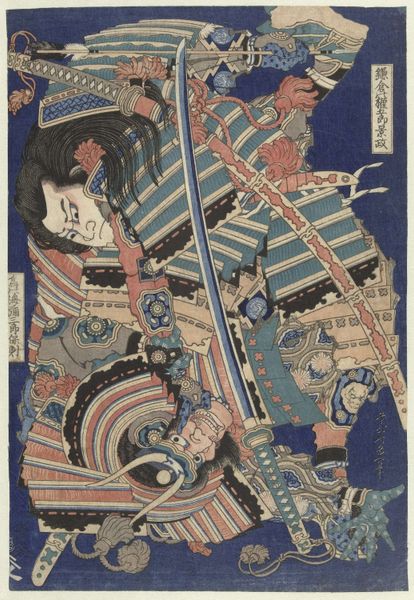
Actors Representing the Feat of Asahina Breaking the Armer of Soga no Goro (Hirakawa-cho Yamamoto-cho kusazuribiki odori yatai) from the series The Festival of the Sanno Shrine (Sanno go-sairei) 1780
0:00
0:00
#
narrative-art
# print
#
asian-art
#
ukiyo-e
#
japan
#
figuration
#
cartoon carciture
Dimensions: 26.3 × 19.4 cm
Copyright: Public Domain
Editor: So this print, "Actors Representing the Feat of Asahina Breaking the Armor of Soga no Goro," made in 1780 by Torii Kiyonaga, uses really fascinating colors to depict a super dynamic scene. I am curious about how you read a narrative scene like this through its symbols and cultural references. What jumps out at you? Curator: Well, first, consider the date – 1780. Think about the Edo period’s cultural memory being performed here. The very act of representing this feat on a festival float reveals the desire to keep those narratives alive. See how the broken armor isn’t just about brute strength? Editor: You mean the characters embody something larger than themselves? Curator: Precisely. Notice how Asahina, the strongman, is also subtly rendered in his defeat of a historical figure? The layered armor and sword indicate that, beyond the brute strength, cultural memories and identities were constructed through symbols for audiences participating in public festivals and performances. Editor: Ah, right. Like the armor shattered signifies not just physical defeat but also a shift in power or identity… or perhaps a commentary on the past? What do the other decorative motifs signify to you, then, as elements carrying layers of history? Curator: The flowers represent a form of continuity of nature and celebration. What this particular flower means requires further study, which reinforces the notion of continued investigation and evolving stories for the people. They mark not only the location and activity, but that memory is as pervasive as plantlife in our lives. Editor: I never considered prints in the way they build public imagination and sustain the continuity of storytelling and the celebration of strength in narrative over time. Curator: Precisely! Cultural symbols serve as a bridge linking emotions with memory. It leaves me wondering which memories the Edo viewers recognized and how. Editor: Me too! There are a lot of interesting avenues for understanding historical values and how cultures remember collective figures!
Comments
No comments
Be the first to comment and join the conversation on the ultimate creative platform.
